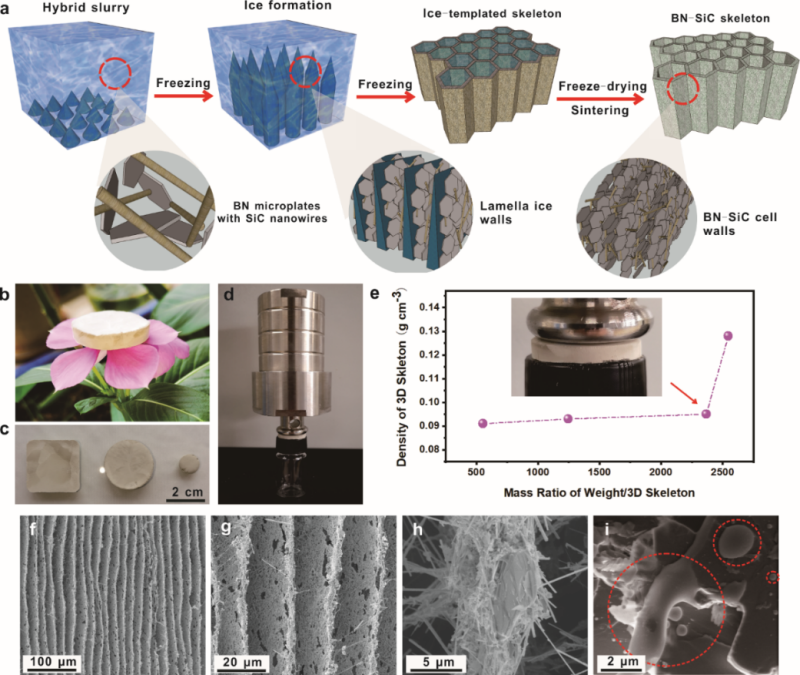Scientists Present Ice-Templated Filler Skeleton with Significant Thermal Conductivity Enhancement
A research team led by Dr. SUN Rong and Dr. ZENG Xiaoliang from Shenzhen Institutes of Advanced Technology, collaborated with Professor XU Jianbin from the Chinese University of Hong Kong, developed a novel thermal management material, showed light-weight, mechanically tough, and could rapidly transfer the heat. The study reported in ACS Applied Materials & Interfaces, a 3D directional skeleton fabrication via an ice-templated assembly-drying-sintering approach and the thermal property of the corresponding polymer composites.
High power density in electronics presents an increasing requirement for heat dissipation, which makes the research on thermal interface materials extremely significant. With high filler content, the thermal conductivity could be obviously enhanced, yet leads to high cost and mechanical properties deterioration inevitably.
So it is still challenging to achieve satisfactory thermal conductivity enhancement with reasonable mechanical properties.
The study presented a novel approach to constructing an interconnected and aligned boron nitride (BN)-silicon carbide (SiC) hybrid skeleton by the combination of ice-templated assembly and high temperature sintering, and then prepared the 3D BN-SiC/ polydimethylsiloxane composites.
This ice-templated and sintered BN-SiC skeleton was demonstrated to be an efficient filler to enhance the thermal conducting performance of thermal interface materials.
The welding of SiC nanowires transformed the frail BN sponge into a 3D continuous skeleton via thin interfacial borosilicate glasses phases, which enhanced the transfer of phonons between the adjacent BN plates and reduced the inter-skeleton phonon scattering.
The value of thermal conductivity was significantly enhanced which went up to 3.87 Wm-1K-1 at a filler loading of only 8.35 vol% with an enhancement efficiency per 1 vol% filler of 220%, superior to other BN skeleton-contained composites.
The research emphasized the sintering-introduced bonding between two separate phases (boron nitride-silicon carbide) , which lead to strong interfacial interaction when compared to Van der Waals or weak chemical bonding, thus brought lower thermal resistance.
"The sintering process could further facilitate the interfacial thermal transport,” said Dr. SUN Rong. “Combined with ice-templated assembly technology, we offer an efficient strategy to achieve a remarkable improvement of for heat dissipation capacity in electronics.”
This study represents a new avenue to addressing the heat challenges in traditional electronic products.

Figure: Fabrication and characterization of 3D BN-SiC skeleton. (a) Illustration of the overall preparation procedures of 3D BN-SiC skeleton. Optical photograph of (b) prepared 3D skeleton putting on a flower and of (c) samples that were tailored into various shapes. (d) Strong sample (25.4 mm in diameter and 7 mm in thickness) bearing the compression generated by 1600 grams force. (e) Density-mass ratio curve of 3D BN-SiC skeleton under varied external force. (f-i) SEM images of 3D BN-SiC skeleton at different magnifications.(Image by Dr. YAO Yimin)
Media Contact:
ZHANG Xiaomin
Email: xm.zhang@siat.ac.cn
Tel: 86-755-86585299
Download the attachment:
Achieving Significant Thermal Conductivity Enhancement via an Ice-Templated and Sintered BN-SiC Skeleton